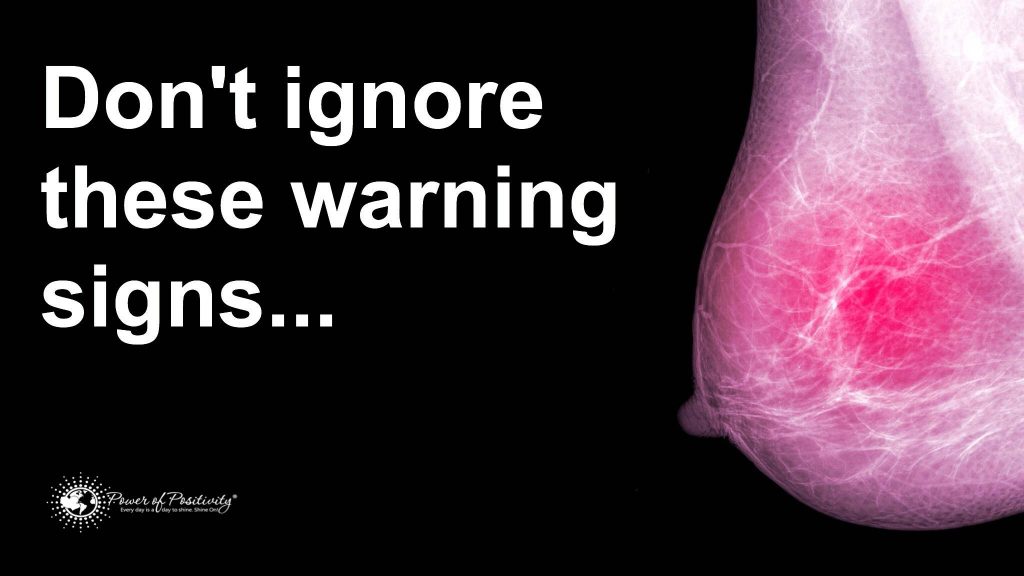Breast cancer awareness is at an all-time high, and most women are keenly aware of the potential threat that they’ll develop it. Breast cancer screening programmes are readily available and are credited, along with the increased awareness, for five-year breast cancer survival rates have risen from about 75 peer cent in 1980 to over 90 per cent today. However, while many women are aware of the most common self-screening technique of checking their breasts for cancerous lumps, there are several other signs that go ignored. We’ll shed some light on those 7 Often Ignored Signs of Breast Cancer in this article.
A Lump in the Armpit
As mentioned, checking for lumps in the breast is the most common self-screening method used by women to detect breast cancer. What some women may not know is that a lump (or lumps) could be found in their armpit before being detectable through their breasts, which could indicate that breast cancer has spread to their lymph nodes. These small lumps in the armpits are usually painless, but tender. However, given that these lumps could be caused by other factors (irritation from shaving or using deodorants among them), one should look into them further before jumping to conclusions.
Breast Changes Size or Shape
This can be a difficult sign to detect in some cases, given that the changes may not be dramatic and could be ascribed to another cause, such as changes in body mass. Given the difficulty in detecting a change in breast size without any other reference, the most effective method is to compare both breasts in relation to each other. If one has grown larger or its shape has changed compared to its twin (or former twin), it could be that breast cancer is the cause.
A hoarse cough or Shortness of Breath
A hoarse cough that doesn’t seem to want to go away and/or shortness of breath could indicate the presence of pleural effusion, which is caused by a buildup of fluids in the pleural cavity between the lungs and chest wall. That buildup can be caused by a number of cancers, including cancers of the lung, ovaries, breasts, and stomach. In addition to difficulty breathing, which could lead to tiredness from interrupted sleep, the condition could lead to a feeling of pain or heaviness in the chest area.
Sores Refuse to Heal
For most of us, wounds or sores scab over and heal within a few weeks. However, when our body is busy dealing with an even more serious threat like cancer, wounds could outright refuse to heal. In fact, tumors have been described as wounds that trigger the same mechanism in the body. Therefore, any such stubborn wound could be a sign of a deeper issue, whether it be related to the wound itself, or something broader, like the presence of cancer in the body. Have your wound looked at to determine if it’s infected or if something else could be causing the delayed healing.
The Nipple Changes
This can be one of the most noticeable changes, as some women’s nipples will become inverted after contracting breast cancer. In rarer forms of breast cancer, the nipples could also develop ulcers, or become crusty or scaled. Spontaneous discharges from a single nipple could also be signaling breast cancer, especially if the discharges are bloody. If the discharge is coming from both nipples, it’s more likely the result of another condition, particularly if the discharges are full of pus, which would indicate an infection. Regardless, any such discharges should be looked into further.
Your Dog Sniffs Around Your Breast
While most of us know that dogs have a great sense of smell, few of us would believe that they are capable of sniffing out cancer. However, studies and plenty of anecdotal stories do indeed confirm that dogs can sniff out cancer, even in its very early stages. In one study, trained dogs were able to determine with about 90 per cent accuracy which people did or did not have cancer, with 31 of the 169 samples being breath samples from patients with breast cancer. So if your dog begins routinely sniffing around your breast, it could be a good idea to get screened.
Changes to the Skin
The skin area near a cancerous tumor may undergo visible changes that can signal the presence of cancer beneath. If the skin becomes toughened and dimpled, taking on a quality that is often compared to the outside of an orange peel that could be a big sign. Furthermore, if the skin around your breasts becomes red, swollen and warm to the touch, that’s another potential sign. Lastly, if your breast begins getting itchy and particularly if that itch doesn’t seem to want to go away when treated with an ointment that could be another sign that shouldn’t be ignored.
Culled from HealthGuide

